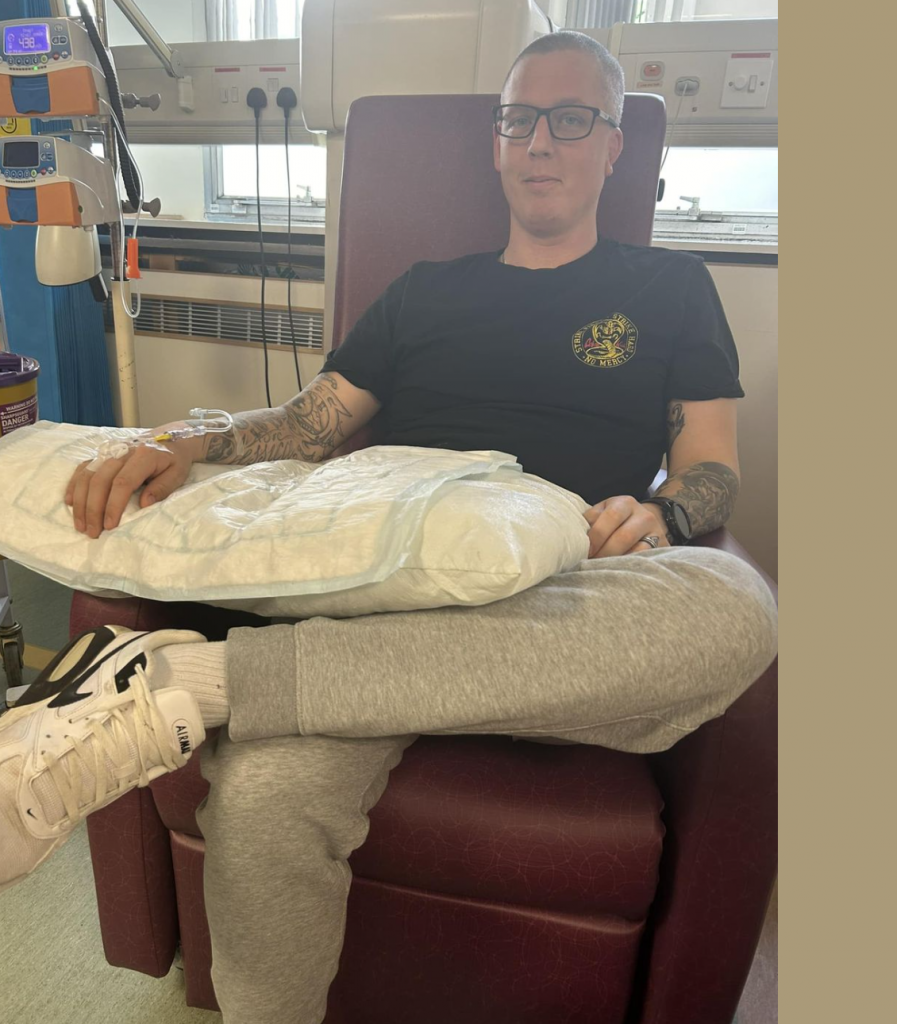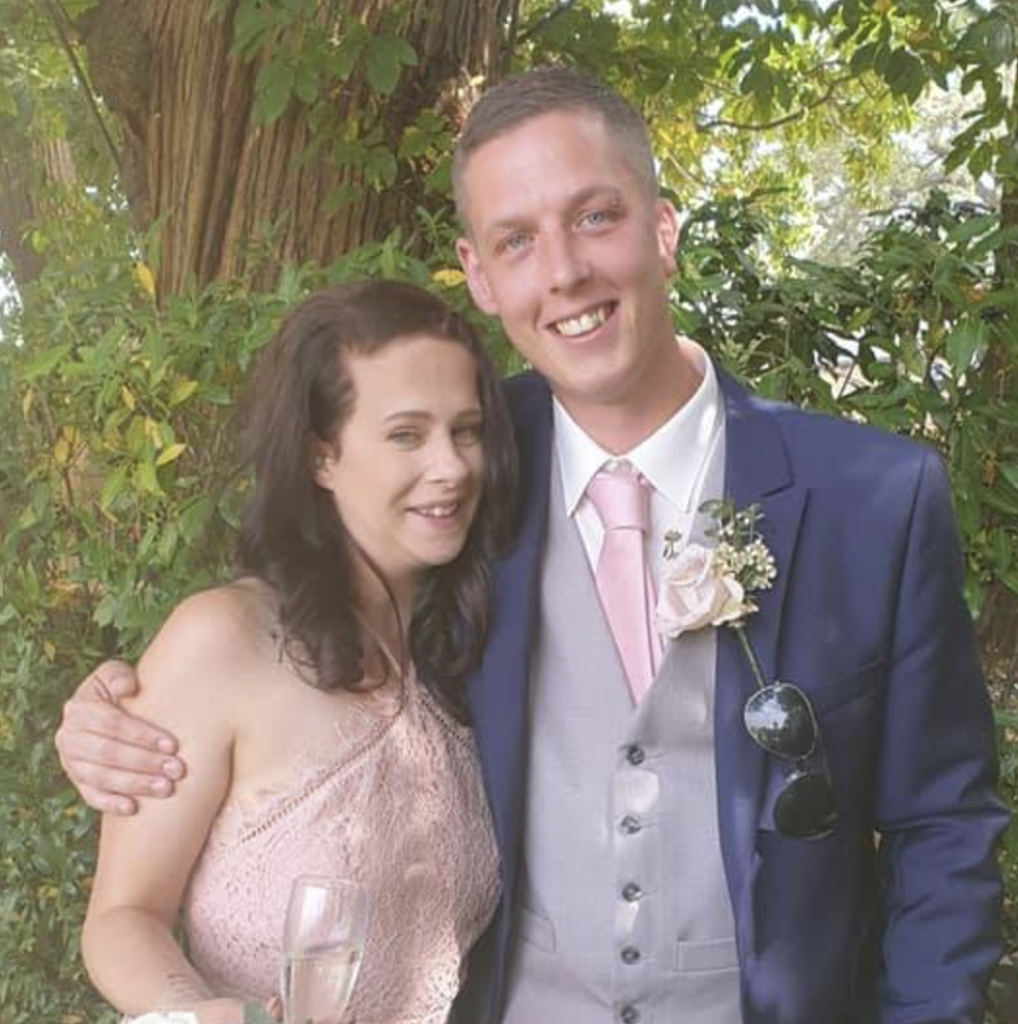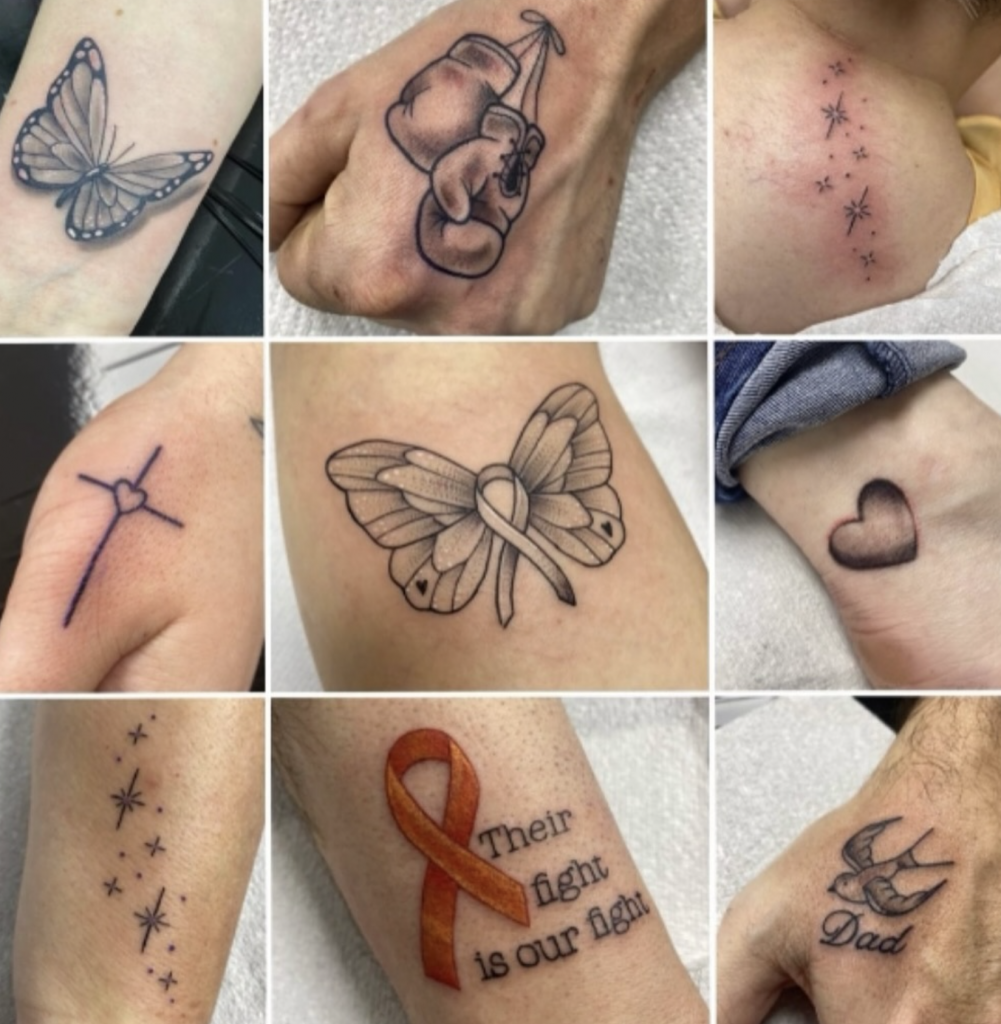A Delayed Diagnosis
- 34-year-old Dan Wyatt, a fit and healthy father of four, had assumed his migraines were due to too much screen time and an eye doctor was not concerned, but then bouts of severe dizziness several months later led him to the emergency room where doctors found a tennis ball-sized brain tumor in September 2023. He had caught it just in time — two days later, Dan underwent life-saving surgery for the incurable type of brain cancer.
- Dan’s tumor was classified as an oligodendroglioma, more commonly referred to as a type of glioma. According to Mayo Clinic, an oligodendroglioma “begins in the oligodendrocytes, cells that make a substance that protects nerve cells and helps with the flow of electrical signals in the brain and spinal cord.”
- Brain tumors impact a person’s brain function and overall health, depending on their size, type, and location within the brain. Tumors that grow big enough and disrupt normal central nervous system functioning can press on nearby nerves, blood vessels, or other tissues. The disrupted central nervous system can present in various ways, making walking or maintaining balance difficult.
- It’s important to know that brain cancer can affect anyone at any age, don’t delay getting to the emergency room with any concerning symptoms, especially if they don’t go away.
The specific type? An oligodendroglioma, per Yahoo News UK, more commonly referred to as a type of glioma. According to Mayo Clinic, an oligodendroglioma “begins in the oligodendrocytes, cells that make a substance that protects nerve cells and helps with the flow of electrical signals in the brain and spinal cord.”
Read More
“I had to give up work, my wife had to give up work to care for me as I lost a lot of my vision following the operation to remove the tumor,” he continued. “Cancer doesn’t care who it hurts it doesn’t affect just the person diagnosed, in my case it has immediately impacted six people’s lives.”

Searching for ways to rally support and help raise awareness for brain tumor symptoms — especially for those under 40 who may not be looking out for this type of “indiscriminate” diagnosis — the family and community started “Team Danny.” One of the organization’s fundraisers involved Dan’s son, Daniel, who led the way in shaving his head for his dad, encouraging others at school to follow suit.
As for the adult supporters of Team Danny, they have each gotten tattoos for Dan with varying symbols of their connection with him.

“How Dan has remained so positive has been an inspiration,” his mother-in-law Sarah Back expressed, noting how uncertain this type of diagnosis is, living for “weeks” longer, or up to 14 years. “He’s ready to do whatever it takes, and so is Team Danny.”
Making Sense of a Brain Tumor Diagnosis
According to the American Society of Clinical Oncology (ASCO), brain tumors account for 85-90% of all primary central nervous system (CNS) tumors. They can either be cancerous (malignant) or non-cancerous (benign), and depending on where the tumor forms on the brain, doctors determine its type, potential symptoms, and potential treatment.
WATCH: Debunking 5G Claims Causing Brain Cancer
Signs and Symptoms of Brain Tumors
Brain tumors impact a person’s brain function and overall health, depending on their size, type, and location within the brain. Tumors that grow big enough and disrupt normal central nervous system functioning can press on nearby nerves, blood vessels, or other tissues. The disrupted central nervous system can present in various ways, making walking or maintaining balance difficult.
However, it’s important to know that brain tumors do not always cause symptoms.
Other signs of brain tumors may include:
- Headaches
- Difficulty speaking or thinking
- Weakness
- Behavioral changes
- Vision changes
- Seizures
- Loss of hearing
- Confusion
- Memory loss
Treatments for Brain Tumors
Treatment options for brain cancer depend on a variety of factors, including the size and type of the tumor as well as the grade of the tumor.
Surgery, radiation, and chemotherapy are options doctors use to treat brain tumors. Cancer warriors are encouraged to talk to their doctor about their situation and the best treatment options.
The prognosis for brain cancer, or how likely it is to be cured, depends on a few things, including:
- The type of brain tumor
- How fast the brain tumor is growing
- The tumor’s location
- If there are DNA changes in the cells of the brain tumor
- If the entire tumor can be removed with surgery
- Your overall health
Your doctor will be able to help you understand your specific and unique circumstances and how they relate to your prognosis.
Types of Cancerous and Non-Cancerous Brain Tumors
A brain tumor can affect you differently depending on its location and if it is cancerous. Some brain tumors are non-cancerous (or benign). According to the National Cancer Institute, some examples of these types of brain tumors include:
- Chordomas are primarily benign and slow-growing and are often found near the tailbone or where the spine meets the skull.
- Craniopharyngiomas are rare, slow-growing tumors that don’t spread to other parts of the brain or body. They form near the pituitary gland near the base of the brain.
- Gangliocytomas are rare tumors of the central nervous system that tend to form on the temporal lobe (the left or right side of the brain).
- Glomus jugulare are rare and slow-growing tumors.
- Meningiomas are rare brain tumors that usually form on the outer layer of tissue that covers the brain (dura mater).
- Pineocytomas are rare and slow-growing tumors located in the pineal gland near the middle of the brain.
- Pituitary adenomas are slow-growing brain tumors of the anterior pituitary located in the lower part of the brain.
- Schwannomas are rare tumors that grow on the cells that protect nerve cells. They are called Schwann cells.
- Acoustic neuromas (vestibular schwannoma) are slow-growing tumors that develop from the nerves that help balance and hearing.
Other brain tumors are malignant or cancerous. These kinds of tumors include:
- Gliomas are the most common form of cancerous and aggressive primary brain tumors.
- Astrocytoma (glioma) forms in astrocytes (star-shaped cells). Depending on how aggressive or fast they grow and impact brain tissue, these tumors are classified into four grades.
- Ependymomas are tumors classified into three grades depending on how aggressive or fast they grow.
- Oligodendroglioma tumors are classified into grades depending on their growth speed. Grade 2 oligodendroglioma tumors are slow-growing and can invade nearby tissue, but they may not present symptoms for many years before detection. Meanwhile, grade 3 oligodendroglioma tumors proliferate.
- Medulloblastoma tumors are classified into four different grades depending on their aggressive nature or how quickly they grow.
- Glioblastoma, which is considered a central nervous system (CNS) tumor, is the most common and aggressive brain tumor in adults.
Resilience Through Adversity
SurvivorNet specializes in covering the lives of people who overcome seemingly insurmountable obstacles. Often, seeing the positive helps them maintain their resilience.
Dr. Zuri Murrell, an oncologist at Cedars-Sinai Medical Center, spoke to SurvivorNet about the role of a positive outlook on survival rates: “I’m pretty good at telling what kind of patient are going to still have this attitude and probably going to live the longest, even with bad, bad disease. And those are patients who, they have gratitude in life.”
Resilience: Staying Positive Despite Adversity
Meanwhile, resilience is an important trait, but not the easiest to build. When building resilience, the ultimate goal is not to avoid tough times, but to be able to bounce back from them. And yet, when they are faced with an overwhelming, life-changing situation, how do people shift their view? How do they learn to see the problem as temporary, rather than permanent, and figure out a solution?
It’s complicated, because building resilience is more about your mental and emotional fortitude than anything else. According to the American Psychological Association, “the resources and skills associated with more positive adaptation (i.e., greater resilience) can be cultivated and practiced.” In other words, resilience is not something you’re born with, which should be encouraging. Instead, after every challenge in your life, you build more and more resilience to those hard times.
Building resilience is down in the same way you build muscle, through patience and steady exercise of the skill.
Some lessons learned from other cancer warriors SurvivorNet has covered include being willing to learn, spending time with people who inspire you, allowing yourself to grieve, being flexible, and leaning in to your community for support.
Tips To Overcome Adversity
Overcoming adversity can certain seem daunting. Many people think reciting upbeat mottos or pretending to be cheerful will help, but these solutions can make someone feel even more dejected than before. Instead, pay attention to the following steps to make meaningful change.
- Set a goal. No matter what the situation, create a new goal for yourself. If you have just been diagnosed with cancer or a chronic illness, perhaps one goal would be to educate yourself about the disease and the possible treatments as much as possible.
- Make a plan. How will you achieve this goal? Your plan will help you focus on that goal. Dr. Siddhartha Ganguly refers to this determined, focused mindset as “the eye of the tiger,” which can help people dealing with health problems, such as lymphoma and other cancers. “You have to have the eye of the tiger to go through this grueling process that is necessary these days to get rid of these virulent and aggressive cancers,” Dr. Ganguly, a cancer specialist at Houston Methodist, told SurvivorNet in an earlier interview.
- Rely on others. Spend time with people who show you unconditional support and encouragement. They will alleviate your stress and help you remember that you’re not alone in this! Dr. Samantha Boardman, a psychiatrist and author, previously told SurvivorNet that one “coping strategy that can be productive is reaching out and talking to others. Having support we know is really critical in the healing process.”
- Use positive self-talk. Leave messages with affirmations in places you frequent. Put notes around your mirror or the computer screen that say “You got this! or “Keep going!” Cut out inspirational quotes from people you admire and surround yourself with their words. Dr. Boardman explained to SurvivorNet that “Positive emotions have unique benefits above and beyond managing negative emotions.”
Facing Cancer: How to Turn Stress into Strength
If you’ve been through a difficult health challenge or any type of adversity throughout your live, Dr. Boardman told SurvivorNet in an earlier interview that one way to get your mental health back in check after a diagnosis is to try to play up your strengths.
“I sometimes will ask patients, tell me about yourself when you were at your best,” she explained. “Using that story, trying to figure out what strengths come to mind. Is it patience? Is it appreciation of beauty? It is perseverance? [Then we can] use those strengths in constructive ways to navigate their cancer journey.”
Dr. Boardman says another way to approach harnessing the strength you already have is by tapping into your values. This could be family, close friendships, spirituality, or commitment to a healthy lifestyle.
Reminding yourself of what your values are and how you are living accordingly is another way to unleash that inner strength.
Contributing: SurvivorNet Staff
Learn more about SurvivorNet's rigorous medical review process.

